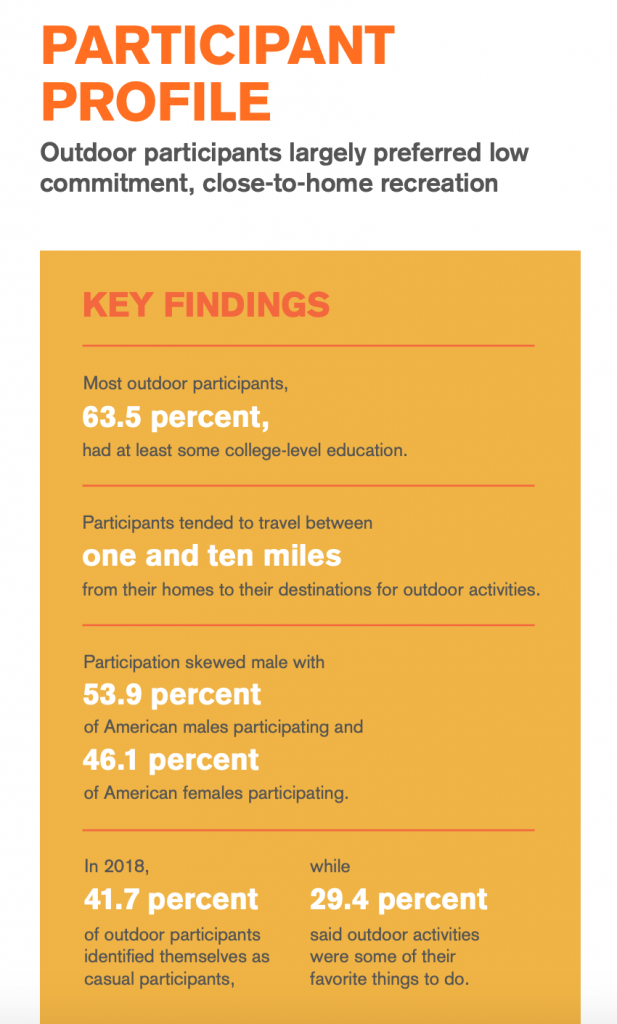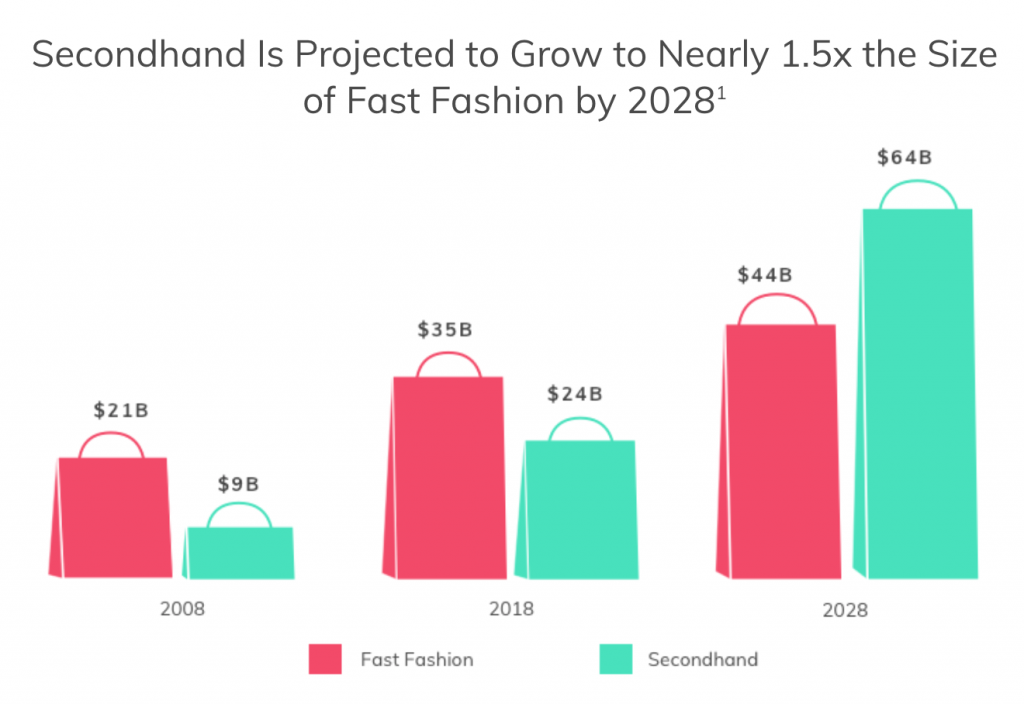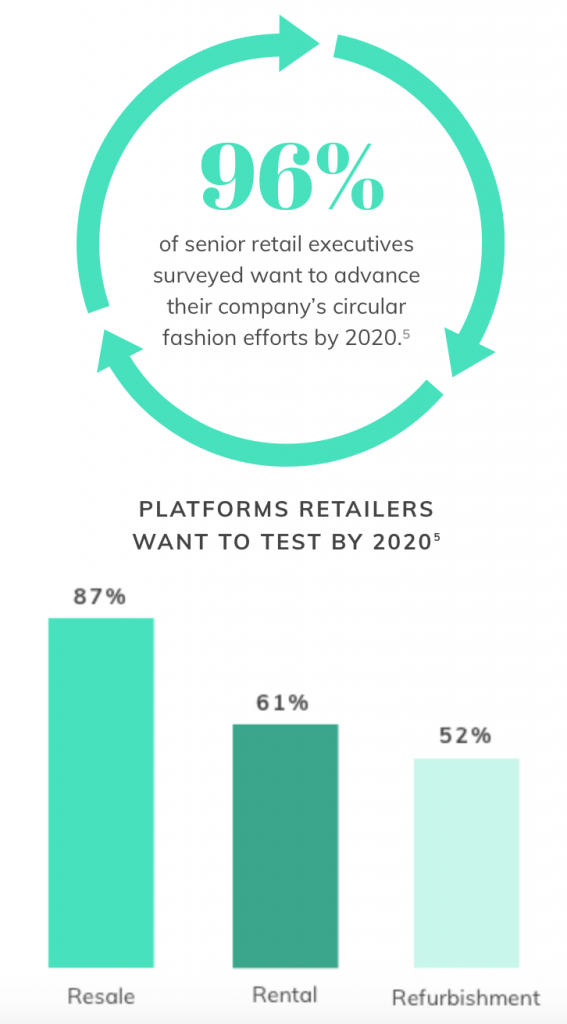Studying a subject by the numbers will often fuel my interest to learn and understand topics on a deeper level. Sure, statistics should be taken with a grain of salt, and it is prudent to examine the origins of data and whether the information comes from reliable sources and research methods. Numbers are frequently manipulated to prove a point, which largely hinges on context. Statistics rule number one: numbers can be misleading.
Still, numbers are known for being attention grabbing hooks. Ordered lists and statistics are a dime a dozen, and sometimes they cross onto our radar screen a day late and a dollar short. However, on occasion numbers prove to be effective drivers of awareness and change.
This was Outdoor Retailer week in Denver, and an estimated crowd of 29,000 gathered in the mile high city for the largest trade show in the outdoor industry. Nearly 1000 brands set up booths to exhibit apparel, gear, raw materials, and other outdoor-centric products and services, while retail buyers, designers, sales reps, and other industry professionals came together for several days of immersive demonstrations, seminars, and other educational opportunities. It makes for a mind-boggling environment filled with a flurry of order-writing and a community of like-minded enthusiasts who are high on the stoke of exploring new and innovative ideas in the outdoor sports and recreation world.
This was my second time in attendance at OR. As far I’m concerned, outdoor apparel is my niche of choice in the fashion world. I feel a deep connection with the people, products, and purpose presented in the outdoor arena, and enjoy having a hand in the development and prototyping of technical and functional apparel designed for enjoying nature.
It’s also safe to say that the crowd at OR has a higher percentage of attendees who are committed to sustainability efforts and are conscious of supply chain ethics. The circular economy is an increasingly common topic, and efforts to reduce the industry’s impact on the environment are growing trends. It only makes sense that this particular group of companies and individuals are rallying to take care of the wellbeing of this planet, since outdoor enthusiasts are deeply connected to the earth for both their recreational opportunities and livelihoods.
OUTDOOR PARTICIPATION STATISTICS
The Outdoor Industry Association released their annual report this week on Americans’ outdoor participation in 2018. To kick off this roundup of OR-inspired statistics, here is a surprising result of the annual study of the relationship of Americans with outdoor recreation:
- Just under half the U.S. population does not participate in outdoor recreation at all.
Wow. It’s astonishing to think that so many Americans are indoor-centric. The fact that 50.5 percent engaged in outdoor activities reflected a 3.1 percent increase from 2017 to 2018 is a promising, even though modest, improvement.

Outdoor participation meant different things to different people, which was evident in the frequency of each participant’s outdoor activity. The most active 35.4 percent engaged in outdoor recreation at least once per week. Eleven percent participated once per quarter or less. The fastest-growing segment of participants fell in the middle of the pack, as Americans reporting 12 to 23 total outings climbed 1.6 percent from 2017 to 2018.
In 2018, 98 million Americans were considered moderate participants and spent at least ten days out of the year participating in outdoor recreation. This equated to 33.2 percent of all outdoor participants.”
– Outdoor Industry Associate’s 2019 report on Outdoor Participation

The study also outlines trends by age and gender:
“In contrast to increasing participation among girls and young women, young male participation has steadily declined over the last decade. For example, in 2007, 72 percent of boys ages six to 12 recreated outside. In 2018, that figure fell to just 65.8 percent. While youth participation among young males has been decreasing, participation among young females has been rising. Indeed, participation among young women ages 18 to 24 grew by an average of 3.3 percent in just the past three years. And girls ages six to 12 have had remarkably steady participation, averaging right around 59.0 percent over the past decade.”
– Outdoor Industry Associate’s 2019 report on Outdoor Participation
My daughter happens to fall in the category of ages six to 12 that is demonstrating growth in outdoor participation, and I am encouraged to continue to do my part in getting outside with her for regular bike rides, camping, and kayaking adventures. The research shows that experience compounds over the years, and nearly 65% of outdoor recreation participants report having over 10 years of experience. It’s a habit worth encouraging and instilling at a young age.
FASHION IMPACT STATISTICS
Another set of statistics that I’ve been paying attention to for many years encompasses the impact of the apparel industry in relation to sustainability. Back in 2011 and 2012, I frequently tweeted about sustainable fashion initiatives, but this was still a fringe movement in the fashion industry in those days. Recycled and organic fibers and other eco-friendly manufacturing practices were not yet widespread talking points in mainstream apparel, though the ideas were gaining traction.
Nearly a decade later, the landscape has changed dramatically. It’s encouraging to walk around the OR trade show and see all sorts of innovative materials and efforts to incorporate sustainability throughout all aspects of design and supply chains. New textile technologies are gaining traction such as recycled materials utilized by longstanding pioneers Gore-Tex and Polartec, and newcomers like artificial spider silk and SeaWool — a fabric made from upcycled oyster shells – are being utilized by a number of brands.
According to a collection of fashion industry waste statistics compiled by EDGE, the impact of industry waste is a huge problem. However, while I don’t want to discount the fact that the apparel industry has long been cited as highly polluting and a major contributor in the manufacturing sector when it comes to unsustainable environmental impacts, fashion impact statistics like the following should be taken with a grain (or maybe a teaspoon) of salt.
- 20% of global waste is produced by the fashion industry.
- 15% of fabric intended for clothing ends up on the cutting floor.
- Consumers throw away shoes and clothing [versus recycle], an average of 70 pounds per person, annually.
- Up to 95% of the textiles that are land filled each year could be recycled.
- Between 2000 and 2014, garment production doubled with the average consumer buying 60% more pieces of clothing compared to 15 years ago. Yet, each apparel item is now kept half as long.
Are these statistics surprising? Perhaps the average consumer has not seen numbers like this before, but I’ve been exposed to these staggering claims for many years and have parroted plenty of them myself.
I had already written a large portion of the article you are reading right now when I stumbled across a brand new article from Alden Wicker exposing the truth behind these startling fashion sustainability statistics, or more precisely, the lack of truth or substantiated sources. I’d already written the intro to this post about questioning the sources of statistics and how numbers can be misleading, and then BAM! — an article gets published that calls out this very thing right as I was questioning the sources of the fashion statistics I was about to share.
Many reputable sources have compiled and shared these misleading statistics over the years, including the Wall Street Journal and the New York Times.
Only one out of the dozen or so most commonly cited facts about the fashion industry’s huge footprint is based on any sort of science, data collection, or peer-reviewed research. The rest are based on gut feelings, broken links, marketing, and something someone said in 2003.
– Alden Wicker in “Fashion has a misinformation problem. That’s bad for the environment” for Vox
It turns out that fashion activists have been sharing information that has been taken out of context and corrupted, just like the game of telephone we played as kids where you whisper a sentence in your neighbor’s ear, and by the time the words makes their way around the circle, the resulting sentence often sounds nothing like the original.
Such is the case with the following story behind a commonly cited fashion statistic. Environmental researcher Dr. Linda Greer admitted that to her horror, she is likely responsible for one of the most often misconstrued claims to date about the fashion industry being the 2nd most polluting industry in the world. The origins of this came from her examination of water pollution in Jiangsu, China – the only province that had good government data available to analyze. While the textile industry was the second most polluting industry in that province, it’s hardly accurate to extend that claim to cover the planet. Yet years later, these claims are still commonly cited.
It turns out that there is very little evidence to back up most of the claims about the fashion industry’s impact. According to Wicker, the most well researched statistic currently available is that 4% of global waste is from the fashion industry. This is far cry from the 20% figure in my bulleted list above.
The data may be inaccurate, but I still believe we live in a disposable society filled with consumers who support cheap, fast fashion without much consideration to the impact of modern manufacturing on our planet – though sentiments are certainly changing as more people gain awareness and seek solutions to mitigate the negative impacts of consumer culture on our environment.
Brands and countries are taking steps to implement data collection programs and technologies to track improvements in the textile arena, so the future holds promise of progress and data-backed transparency within supply chains.
Allied Down & Feather won an Innovation award at OR this week for a new technology that allows down feathers to be coated with nanoparticles, enabling downstream garments to be scanned and verified to contain responsibly sourced down insulation that can be traced back to the species and location of the source. Allied has partnered with The North Face on a pilot program to explore commercial applications of their new technology.
The innovations and initiatives that I’ve witnessed in the apparel industry in recent years are inspiring and encourage me to stay the course, even though at times I question my own contributions and commitment to this industry that I’ve immersed myself in for the bulk of my career thus far. Issues like these remind me of where I want to focus my time and energy when it comes to all things fashion related – whether that be in my career or as a consumer: I want to continue to highlight choices to support Recommerce efforts when possible and invest in companies that are actively taking initiatives towards sustainability and transparency.
RECOMMERCE STATISTICS
The three R’s of Recommerce are: Rent, Repair, Reuse.
I’ve been a secondhand shopper for as long as I can remember. There is something about the treasure hunt of thrifting that has always appealed to me, and the affordability and sustainable components of secondhand purchases continues to reinforce this pattern of consumption in my own life.
About a year ago, I reflected on my wardrobe and buying habits, and came to the conclusion that an overwhelming majority of my clothes were either secondhand or sewn by my own hands, and the only new items I had purchased in the previous year were largely limited to socks and undergarments. I realize this is not typical behavior for the average clothing consumer, but then again, I often find myself embracing counter culture ways of living.
Recommerce is growing trend that has become more mainstream in recent years; it seems the stigma of secondhand shopping is dissipating.
Consider the following statistics, according to a study by thredUP. While I haven’t gone back to closely fact check their statistics, the methodology used to compile some of their data appears to be derived from surveys and research analysis of shopping habits of American women.
- Secondhand clothing is a growing segment: 9 million more people bought secondhand clothes in 2017 than in 2016. By 2023, secondhand apparel could more than double from today’s $24 billion a year market to over $50 billion.
- Millennials and Gen Z-ers are leading the charge, and 1 in 3 Gen Z-ers were projected to make a secondhand purchase in 2019.
- 40% of new apparel items are purchased with resale potential in mind, a figure which has doubled in the past 5 years.

Several large brands have gone beyond warranty repair programs to develop programs to buy back used gear, refurbish, and resell, including these industry leaders:
Renewal Workshop has paved the way for many more companies to integrate Recommerce principles. Their Oregon location provides a circular option in the fashion world by partnering with wide range of brands to take discarded apparel and textiles and turn them into Renewed Apparel, upcycled materials or recycling feedstock.
Another growing player in the Recommerce arena is Arrive, an online platform for outdoor camping gear rentals delivered to your door. If you’d rather go visit a rental shop in person, the website Gearo will help you find a nearby retailer and reserve your gear online.
Recommerce is gaining popularity, and there is no shortage of opportunities to contribute and participate in a circular economy.

While established brands have traditionally turned a blind or scorning eye towards secondhand retail, they are now wading into the pre-owned and rental markets. Turning to the year ahead, we expect the number of brands getting into the rental, resale, and refurbishment businesses will increase markedly.
– McKinsey x Business of Fashion, “The State of Fashion 2019”
- Reduce, Reuse, Recycle.
- Waste not, want not.
- Be the change.
- Conscious consumption is key.
- The more you know.
Small changes add up to significant impacts over time. Start small. Go outside for a walk or run. Buy something secondhand. Think twice before you toss out a usable or repairable garment and consider donating it instead. Challenge the statistics and consider the consequences, then dress the part of the identity you want to convey. Own your personal style and wear it with pride. Invite a friend to dress the part as well, and then go do something outside together to appreciate the beauty of the great outdoors and this planet that we’re incredibly privileged to populate.


I’m not at all surprised that the oft lambased apparel industry wastrels belief is false but I lacked the means to refute it. Moreover, I find/found it repugnant that the number one driver of waste had nothing to do with factories like mine (btw, we’re 100% solar powered) but that designers over order and this fact was continually and completely absent from any and all discussion of sustainability.
Agreed. There are many factors at play, and it’s easier to shift the blame elsewhere in the supply chain. I continually wrestle with my role in enabling designers to create new styles, as the designers ultimately have a great deal of influence in downstream waste. The more I’ve been involved in discussions around 3D prototyping and whether that helps minimize waste, the conversation circles back around to the importance of good quality patterns and the dearth of pattern skills in the industry domestically. These skills are fundamentally required to propel improvements in 3D implementation as well as overall quality of designs. If the patternmaker isn’t able to produce a well fitting garment in the process of helping the designer realize their stylistic goals, then the production run likely won’t sell as well and will produce more waste in unsold merchandise as well as cutting floor excess from inefficient shaped pieces in the cutting layouts. Our roles are deeply intertwined, and ultimately we have to strive to do our best – and also align ourselves with designers and brands who care about downstream results.